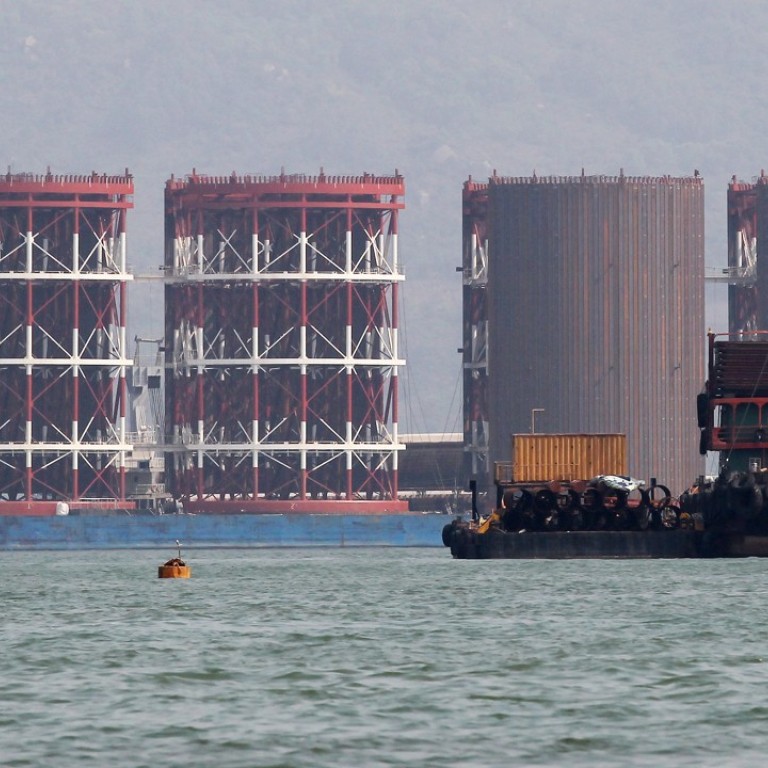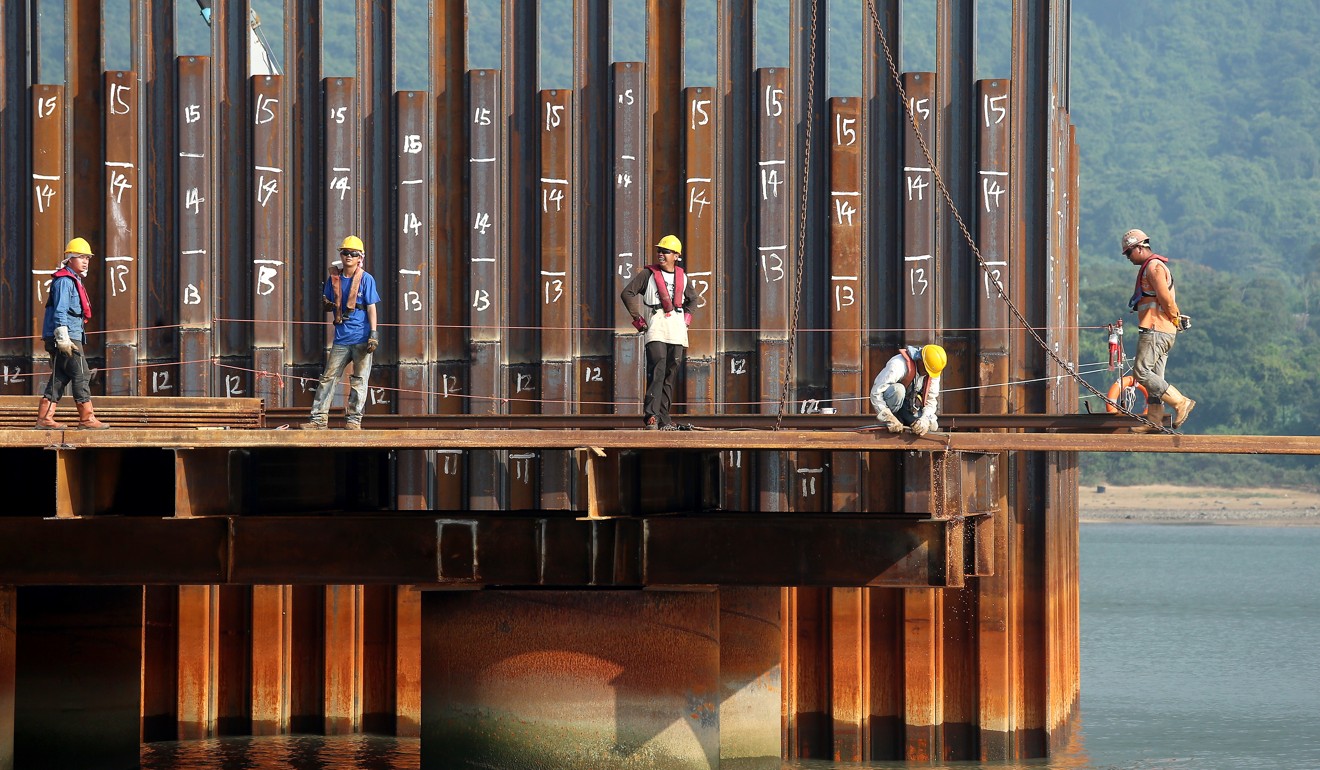
Giant sinking steel cells below artificial Hong Kong island ‘within expectations’, officials say
Pan-democratic lawmakers demand government come clean on site involving bridge to Zhuhai and Macau
The sinking of two giant steel cells underneath an artificial island forming part of the road linking Hong Kong with Zhuhai and Macau was “within expectations” and would not endanger safety, authorities claimed, as yet another scandal hit the multibillion-dollar project.
The revelation came after media reports suggested the cylinders had sunk by as much as 80cm over the past year, threatening a tunnel that runs 11 metres below them.
The Highways Department confirmed the movement but said the problem was much milder, adding the cells were designed to sink by at most two metres.

But three pan-democratic lawmakers demanded the government come clean on the matter and restore public confidence.
A Chinese newspaper broke the news on Tuesday that two cylinders used to build an artificial island in waters off Lantau Island had sunk by 50cm and 80cm over the past year.
To improve speed and limit environmental damage, a non-dredging reclamation method was used by sinking 85 huge steel cells into the seabed. They were filled with debris to anchor them in place.
The latest problem was complicated by a tunnel that runs just 10.9 metres below the two sinking cells.
When construction is complete, the rate of sinking will slow down
The tunnel, which goes from the island to Tuen Mun in the northwest New Territories, is due to be completed in 2020.
Responding to media enquiries, the Highways Department clarified that the two cells had only sunk by 13cm and 17cm.
“An assessment by engineers ... and individual experts hired by the department in January 2017 suggests the two steel cells would sink by two metres in the coming 50 years,” the spokesman said, adding their current rate of sinking was within expectations.
The sea wall and the reclaimed land were also designed to sink half a metre in 50 years.
“When construction is complete, the rate of sinking will slow down,” the spokesman added.
Hong Kong-Zhuhai-Macau mega bridge project set to exceed budget by more than HK$11 billion
“After the drifting and the faking of concrete tests ... the media has again revealed another incident,” Tam said. “The government should come forward and restore public confidence.”

